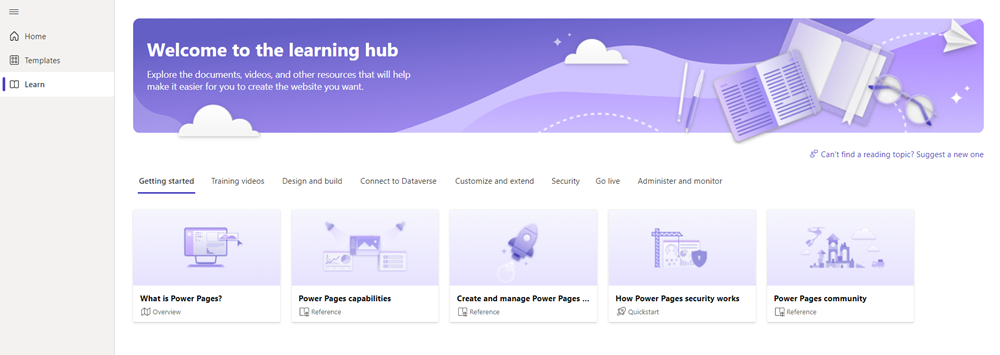In a nutshell
Power Pages is a low-code SaaS platform for building external, business-centric websites. Literally anyone who knows how to work with a computer – be they fulltime web developers, low-code or even no-code creators – can use Power Pages to swiftly design, configure and publish websites.
You can use Power Pages to create dynamic websites that allow visitors to interact with data from your business apps – for example, a customer service portal.
And because it’s also a part of Microsoft Power Platform, Power Pages accesses and uses the same shared business data that’s stored in Microsoft Dataverse as other Power Platform components like Power Automate, Power Apps, Power Virtual Agents and Power BI.
How does it work?
Power Pages combines 3 major functionalities, ensuring an intuitive experience.
#1: The Design Studio
Start by laying the foundations of your website in the Design Studio. Thanks to a straightforward drag-and-drop design, you can add not only text, but also a wide range of no-code components such as imagery, video, and business data forms and lists.
Feel like adding a little extra pizzazz to your pages? Then why not use one of the many customizable themes on offer in the styling workplace. You can even tailor them to your company’s brand.
#2: The Template Hub
Once in the Template Hub, you can access a wide variety of feature-rich templates, all of which come with sample data. Default templates include page structures, navigation, and commonly used pages.
Simply start with the basic building blocks for your website and customize each section or image to suit your needs. What’s more, it’s also possible to use industry-specific templates relating to your own business processes – for example, building permits, after-school registrations, or meeting schedulers.
#3: The Learn Hub
Find yourself stuck at a particular stage in the creation process? No worries: just go to the integrated Learn Hub and you’ll be able to consult all kinds of guides, step-by-step tutorials and videos. You’ll find explanations, for example, on how to build, design and administer sites, configure pages, work with code components, model and visualize business data, and lots more.

4 ways Power Pages benefits your business
#1: Creating websites has never been easier
Regardless of whether you’re a customer service agent who has never ever written a single line of code, or a seasoned developer who devours code for breakfast, thanks to Microsoft Power Pages you can turn any business improvement idea into a low-code website in a matter of hours.
#2: Save time and money
Power Pages is an affordable citizen development solution. And that’s not all: not having to outsource your idea to your IT department means you can save your company money and free up your developers to focus on more complex projects.
#3: For all devices, from desktop to mobile
Once you’ve built your pages on a standard framework, Power Pages will automatically render them across all platforms, desktop or mobile. That’s yet another practicality you no longer need to worry about!
#4: Everything is connected
Power Pages is connected to Dataverse, which means that any data associated with other Power Platform components can also be used to drive Power Pages. In addition, you can automatically link sites to business apps running in the background, thus giving your visitors a fully interconnected experience and bringing you one step closer to becoming a connected company.
Convinced by the benefits of citizen development?
Read all about our low-code app solutions.
Techsplained: innovations don't have to be complicated
Discover how you can go above and beyond in the digital age with the latest technologies featured in our series of 1 minute animated explainer videos. Inspirational, crystal-clear and a relief from the dry business blogs all over the web.





